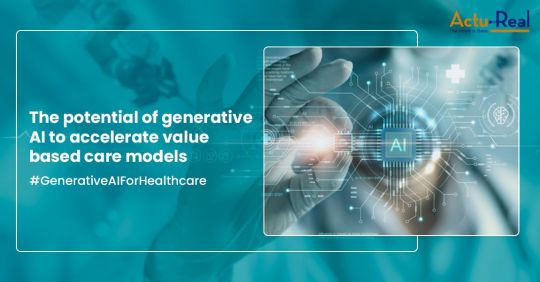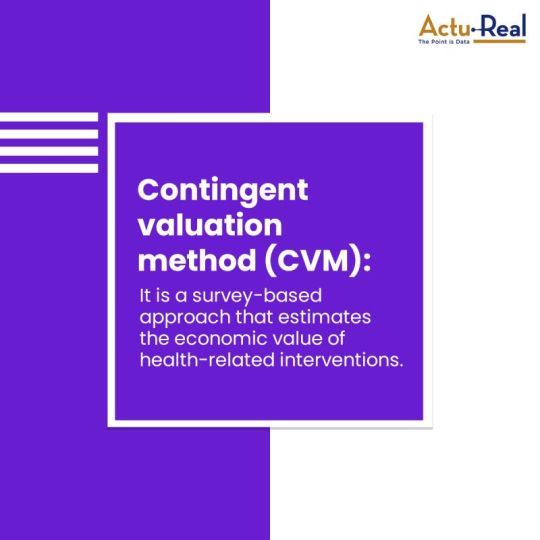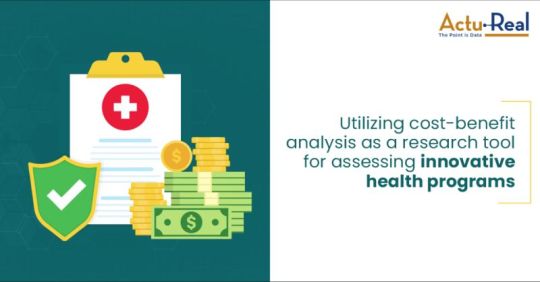Text
Explore Cutting-Edge Technology Services and Digital Innovation
Discover digital innovations solutions designed to propel your business that include healthcare data warehousing and integration of customized clinical rules into claims systems.
0 notes
Text
Actu-Real’s Capability Augmentation Services
Unlock your true potential with Actu-Real's cutting-edge Capability Augmentation services. Expands your product development capacity in response to changing market circumstances or project upturn with our expert team.
0 notes
Text
Revolutionizing Clinical Trials: The Expanding Role of CROs
Unlocking Innovation: Learn how Contract Research Organizations shape modern Clinical Trials. Elevating drug development.
0 notes
Text
Navigating Clinical Trial Realities: 5 Challenges & Opportunities
Unveiling Complexities: Explore top hurdles & potential in drug development's clinical trial landscape. A comprehensive outlook.
0 notes
Text
What are the trends to watch in 2023: Health Equity
As we move into the new year, it’s important to keep an eye on the trends to shape our world in the coming year. One of the most important trends to watch in 2023 is health equity and real-world data analysis. Health equity aims to achieve equal health outcomes for all people, regardless of their circumstances. It includes ensuring everyone gets access to the resources they need to live a healthy life, like clean water, nutritious food, and quality healthcare.
Market access solutions to health equity are an important issue because, in the world, there are significant disparities in health outcomes between different groups of people. For example, people of color are more likely to experience chronic diseases like diabetes and heart disease than white people. And in general, people with lower incomes are more likely to have worse health outcomes than people with higher incomes. These disparities are unfair and unnecessary, and they’re something we need to work to change.
Introduction
By guaranteeing the effectiveness, security, and safety of medicines for use in people and animals, medical devices, and vaccines, the FDA, a branch of the U.S. Department of Health and Human Services, protects the public's health.
When we’re talking about health equity, we’re talking about fairness in health outcomes. Health equity means that everyone, regardless of their race, gender, or income, has the same access to the resources they need to live healthy lives.
One way to think about health equity is as a combination of health care and public health. Health equity is about ensuring that everyone has access to high-quality health care and preventive services, like vaccinations and screenings. It’s also about addressing the social, economic, and environmental factors that affect health outcomes.
These include things such as the availability of healthy food, safe and affordable places to exercise, and the presence of air pollution and other toxic substances in the environment.
Market access solutions of health equity are a goal that all countries and organizations should strive for. Health equity is about ensuring that everyone can lead healthy and productive lives. It’s also about ensuring that everyone can contribute to society. We’ve come a long way from days when healthcare was available only to those who could afford it. But, as we’ll see below, we still have a long way to go.
What is health equity?
It aims to achieve equal health outcomes for all people, regardless of their circumstances. It includes ensuring everyone has access to the resources they need to live healthy lives, like clean water, nutritious food, and quality healthcare.
Why is health equity important?
Certain populations have restricted access to healthcare practitioners, treatment, and health education. The COVID-19 outbreak has brought these inequities to light, particularly among people of color. These complicated market dynamics lead to a health equity gap because pharma's conventional patient services support model concentrates on people who can successfully navigate healthcare. Real-world data analysis shows that support mechanisms are commonly lacking in large therapeutic areas such as diabetic, respiratory, cardiovascular, and mental health.
Market access solutions of health equity ensure that everyone has equal access to the resources they need to be healthy, like clean water and nutritious food. It’s also about addressing the social, economic, and environmental factors that affect health outcomes. It is critical for several reasons.
First, people who lack access to resources to maintain a healthy lifestyle often rely on the healthcare system for assistance. It can lead to an overburdened healthcare system, which can make it harder for people who actually need medical assistance to receive it. Second, when people aren’t healthy, they’re less able to contribute to society. It means that an unwell population has the potential to drain the economy. Third, health inequities are particularly concerning because they affect certain groups of people more than others.
What are the trends in health equity?
Health inequities have persisted for decades, but there are some encouraging trends in this domain. Here are a few: -
There is more visibility around health inequities. More people are talking about these issues, which has the potential to change the way that people think about health inequities.
There is a growing movement to address health inequities. More people are engaging in actions like hosting health equity conferences or writing letters to their elected officials to talk about the importance of health equity.
There are also policy changes that can help address health inequities. For example, there is a growing number of state and local proposals to increase funding for public health initiatives.
Health inequities are rooted in systemic issues, like racism and poverty, that we cannot simply “fix” by providing people with better health care. Instead, we look at the bigger picture and consider how we can change the systems that contribute to health inequities. Here are a few ideas for working towards health equity:
Get involved with a health equity organization or coalition.
Learn about the root causes of health inequities and how they can get addressed.
Engage in political action to push for policies that address health inequities.
Conclusion
The future belongs to real-world data analysis that provides market access solutions to health equity. Society is converging towards a collective good, and it’s time for all of us to do our part.
Racial and ethnic participation barriers may include issues with the trial design such as insufficient recruitment and retention efforts, frequent study visits, participant time and resource limitations, transportation, and participation conflicts with caregiver or family responsibilities. These issues may arise because of historical abuses of the clinical research system. Due to a number of factors, such as access restrictions within the healthcare system, language and cultural barriers, health literacy, and lack of understanding of what clinical trials are and what it means to participate in them, racial and ethnic minority populations may be less likely to participate in clinical trials.
Many aggregators for these services getting amplified are empowering enterprises with platform-driven advanced solutions. Currently, there is a need for real-world data in healthcare. A pragmatic approach combined with in-depth experience sets them apart from the rest in this domain.
0 notes
Text

Emerging technologies exert a transformative impact on capability augmentation. As artificial intelligence, blockchain, and the Internet of Things (IoT) reshape the technological landscape, businesses seek AI specialists for task automation and intelligent systems, blockchain developers to bolster data security, and IoT experts to create interconnected systems.
The demand for such specialized talent is expected to increase, making capability augmentation a strategic tool for pharma companies to stay agile and competitive in today’s challenging business environment.
0 notes
Text

Generative AI holds immense promise in expediting the advancement of value-based care models.
This technology empowers healthcare professionals to derive insights, predict outcomes, and design personalized treatment strategies.
Moreover, it identifies patterns that guide resource allocation, cost-efficiency, and patient-centric care through automated analysis.
0 notes
Text
Pharma Market Access: Understanding Health Economics vs. Market Access
Learn the difference between Health Economics and Market Access in the Pharma sector. Understand how Pharma Market Access plays a crucial role in the industry.
0 notes
Text
Healthcare Value-Based Model: How Does Value-Based Healthcare Work
Learn how the healthcare value-based model works. Understand the principles and benefits of value-based healthcare.
0 notes
Text

The Contingent Valuation Method (CVM) is a survey-based method that asks people how much they would be willing to pay for specific health services or improvements. This hypothetical approach can help gauge the value people place on healthcare interventions, and can inform policymakers' decisions about how to allocate resources.
0 notes
Text

Musculoskeletal pain affects millions worldwide, causing substantial healthcare costs and degrading their quality of life
By implementation of value-based care for musculoskeletal pain treatment can revolutionize healthcare delivery.
By embracing a value-based care approach, medical professionals seek to establish a clinically-integrated network dedicated to sharing best practices and standardized care protocols for musculoskeletal conditions. This collaborative effort aims to enhance patient well-being, minimize healthcare costs, and cultivate a sustainable, patient-centered healthcare system.
0 notes
Text
Unlocking the Potential of Real World Evidence: Key Opportunities and Challenges
Explore the vast potential of real-world evidence in the field of research and healthcare. Discover key opportunities and challenges in utilizing real-world data to gain valuable insights, make informed decisions, and drive innovation in the medical industry.
0 notes
Text
Value-Based Healthcare: The Economic Impact on Healthcare Systems in the US
Value-based healthcare is a new approach to healthcare that focuses on providing high-quality care at a lower cost. This article explores the economic impact of value-based healthcare on healthcare systems in the US.
0 notes
Text

By utilizing CBA, researchers and policymakers can make informed decisions, prioritize funding, and maximize the societal impact of innovative health programs.Need of HEOR in healthcare decision-making.
0 notes
Text
Artificial Neural Networks in Healthcare: Cancer Screening and Diagnosis
Explore how artifical neural networks are revolutionizing in healthcare, enhancing accuracy, and aiding in early detection for better patient outcomes. Gain valuable insights into the potential of AI-driven technologies for improving cancer care.
0 notes